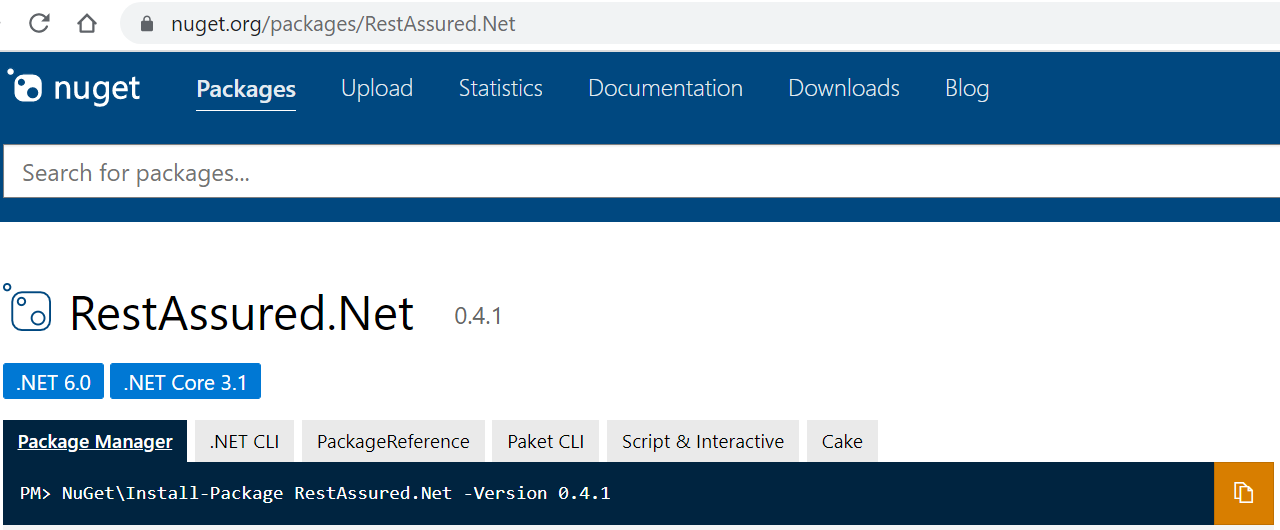Introducing RestAssured.Net
This post was published on October 29, 2022As you might know, I am a fan of the REST Assured library for Java, most notably for the ease with which you can use it to write readable yet powerful tests for HTTP-based APIs.
Also, ever since I worked on the Python and the C# SDKs for the TestProject platform, I’ve been thinking about creating and publishing an open source library of my own. Why? Partly because I love the open source community, partly because I am a big believer in giving back and ‘paying it forward’, and partly because I think it would be a valuable experience as well as a good way to practice and hone my development skills.
Combine these two with the fact that while RestSharp is a very useful library, I’ve been looking for years for a library that would make it as easy to write tests for APIs in C# as REST Assured makes doing so in Java, what you get is the idea to bring REST Assured to C#.
And that’s how RestAssured.Net was born.
I just released version 0.4.1 this weekend, which is the first beta release (after a couple of alpha releases), meaning I think it is ready for the testing community to give it a spin. Here are the most important links:

Let’s have a look at how to use RestAssured.Net to write tests for a REST API.
Getting started
To start using RestAssured.Net, all you need to do is:
- Create a new C# project using either .NET 6 or .NET Core 3.1 (both LTS versions of the .NET framework)
- Add your favourite unit testing framework
- Add the RestAssured.Net package
- Add the following using directive:
using static RestAssuredNet.RestAssuredNet;and you’re good to go!
A first test
For those of you familiar with REST Assured in Java, the following syntax is probably very familiar:
[Test]
public void CheckResponseStatusCodeAndJsonResponseBodyElementValue()
{
Given()
.When()
.Get("http://api.zippopotam.us/us/90210")
.Then()
.AssertThat()
.StatusCode(200)
.And()
.Body("$.places[0].state", NHamcrest.Is.EqualTo("California"));
}The Given-When-Then Gherkin syntax nicely divides our test (which is just a single line of code) in three distinct sections: setting up the request (Given), performing the HTTP call (When) and processing and/or verifying the response (Then).
I’m not going to show all the capabilities of RestAssured.Net here, as the usage guide contains examples for most, if not all of its features, but here’s a non-exhaustive list of what’s supported:
For requests
- adding Content-Type, Accept and custom headers
- adding cookies
- adding either Basic or OAuth2 token-based authorization
- adding query and path parameters
- adding request payloads, with the option to serialize objects to JSON or XML
For responses
- verifying header values and JSON response body elements
- extracting entire responses, header values and JSON and XML response body elements
- deserializing response payloads into objects from JSON or XML
To show how straightforward using RestAssured.Net is, here’s an example of how that deserialization works, by the way:
[Test]
public void DeserializeIntoCSharpObject()
{
TodoItem todoItem = (TodoItem)Given()
.When()
.Get("https://jsonplaceholder.typicode.com/todos/1")
.As(typeof(TodoItem));
Assert.That(todoItem.title, Is.EqualTo("delectus aut autem"));
}This is the implementation of the TodoItem class:
public class TodoItem
{
public int userId { get; set; }
public int id { get; set; }
public string title { get; set; }
public bool completed { get; set; }
}And now what?
There’s more features to come, so watch out for new releases, which should arrive on a pretty regular basis in the weeks and months to come.
What I am looking for most, at the moment, is people in the software testing and the C# development communities willing to give the library a spin, tell me what they think and, most importantly, what issues they have found and what features they are still missing.
Please don’t hold back and create an issue on GitHub if you see some room for improvement, I am sure there is lots that can be added and/or improved.
"